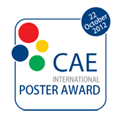This study is part of the project “Marboré”, which is promoted by the Department of Mechanical Engineering of the University of Padua with the aim to offer to aerospatial students a trial aeronautical engine in order to carry out tests and researches.
At the end of 2006 a turbojet dismantled from a target plane which had crashed was picked up and given to the University. After the impact, the propeller was heavily damaged, in particular the front section, seat of the centrifugal compressor. The project included the entire modelling of the turbojet with the help of CAD software and the reconstruction of the damaged parts.
At the end of 2007 the rotor was completed, while the intake casing was excluded from any analysis, as this study required particular knowledge about the casting process. For this reason, it was necessary to carry out a specific study for this part with the aim to find out all the technological details to plan and realise the casting process.
After a careful CAD modelling which was slightly modified from the original according to a different use, the project focused on the design of the casting system. After a series of simulations had been performed using the MAGMASOFT software, the model was modified as to the careful analysis of the results. This enabled to obtain a single good quality prototype without limits on time and elaboration methods. When the quality of the simulation results was satisfactory, the sand mold was realised using SLS (Selective Laser Sintering) rapid prototyping techniques. After that, the light alloy casting was carried out taking into particular consideration the preparation of the alloy. Finally, some Xray analyses were performed to verify the integrity of the component and to compare the simulation results with real data.
This study enabled to analyse each detail accurately and to follow the transformation of a CAD drawing into a real component. In addition, it pointed out the potentialities of this process, which is suitable both to optimise all the steps using specific software and at the same time to minimise the mistakes. |




